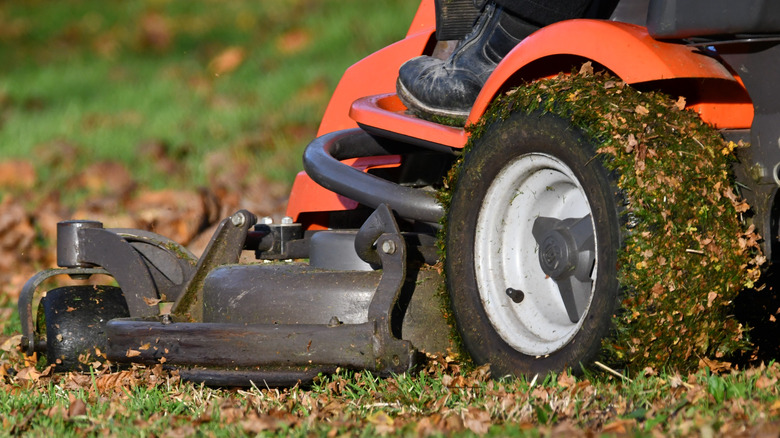How (And How Often) To Change Your Riding Lawn Mower Blades
While small lawns are easily tended to with push-along lawn mowers, anyone with a large yard will undoubtedly notice the benefit of owning a riding lawn mower. There is a huge variety of options out there, from cost-conscious choices through to all-singing, all-dancing lawn mowers with heaps of power. Regardless of whether you're looking to break the bank on one or not, though, maintenance is all part and parcel of owning a riding lawn mower.
While storing your lawn mower correctly can help prolong the condition of many moving mechanical parts, some items will need semi-regular maintenance, and the blades beneath fall into this category. Sharpening your lawn mower's blades can certainly help to keep them in good shape and cutting grass as effectively as they should, but eventually, they will require replacement, not just rejuvenation. The general rule of thumb is that lawn mower blades are best changed every one or two years, although some will prefer to change them annually, even if there is life left in them. This way, owners can ensure they are always getting a great cut on their grass, and it's unlikely they'll forget if it's an annual task carried out each spring, for example. Changing blades on a riding lawn mower can be an easy DIY task, but it's important to go about it safely.
Changing your riding mower's blades is an easy and approachable DIY task
The first step is to prepare your riding mower. Park it somewhere flat and dry with plenty of space around, and ensure it's turned off with the brakes locked or wheels chocked — you should also consider disconnecting the spark plugs as an additional safety measure. Secondly, give yourself the most access possible by raising the mower deck to its highest setting. Getting the front of the mower in the air with a small ramp or similar will help here, but just ensure it's secured properly as you would a car on axle stands.
Now you should be able to access the blades with ease. Grab a suitable wrench and begin to loosen the nut on the blade — you may require something to block the blade when spinning here. Once the blade is removed, simply install the new blade the correct way up, ensuring it's correct and matches the old blade. Be sure to balance your mower's blades as well, as this will reduce vibration and result in a cleaner cut. Once tightened to your mower's individual torque settings, which should be outlined in the manual, consider tackling any other appropriate servicing while you're there before taking the mower off the ramps and finishing the job.

